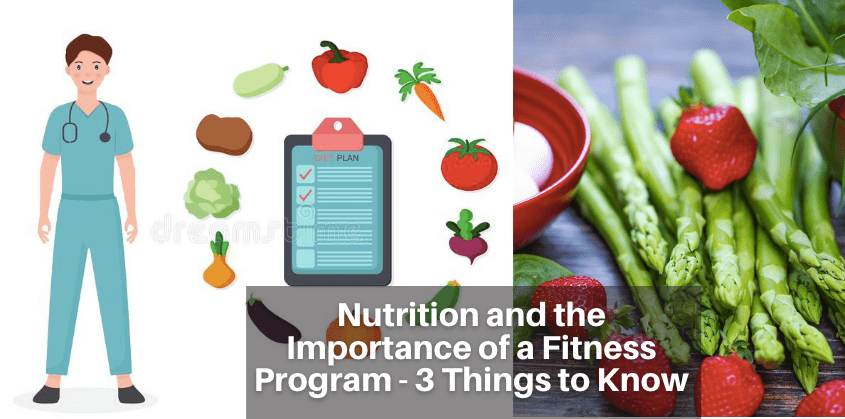Health
How to bring down the levels of inflammation throughout the body?

Last Updated on April 5, 2023 by Nurse Vicky
How to bring down the levels of inflammation throughout the body?
Inflammation is a natural response of the body to protect itself from harmful stimuli such as damage, illness, and poisons. Inflammation can occur in response to any of these stimuli.
However, persistent inflammation can result in several adverse health effects, including the development of autoimmune illnesses, cancer, and cardiovascular disease.
In this post, we will go over the reasons for inflammation, the different ways inflammation can be reduced in the body, and some helpful hints to Keeping a healthy lifestyle can help prevent inflammation from taking place in the body.
Reasons why inflammation occurs
Multiple factors, such as heredity, food, stress, and the presence of toxins, can all play a role in the development of inflammation.
The following is a list of some of the most common causes of inflammation:
A diet that is heavy in processed foods, sugar, and saturated fats can lead to health problems. Both smoking and being exposed to other people’s smoking Both chronic stress and a lack of sleep can be harmful.
The risk of being exposed to poisons and pollutants and insufficient amount of physical activity Inflammation can be induced by several different things, including genetics, food, stress, and the presence of toxins in the environment.
The following is a list of some of the most common causes of inflammation:
Consuming a diet that is high in processed foods, sugar, and saturated fats:
Processed foods are frequently high in sugar and saturated fats, both of which can lead to inflammation in the body.
Chronic inflammation can be caused by eating a diet that is heavy in these kinds of foods, which can in turn increase the risk of a variety of health problems.
Smoking and being exposed to secondhand smoke both have the potential to irritate the body’s inflammatory response.
Cigarette smoke contains several hazardous compounds, including nicotine, which can cause damage to cells and lead to chronic inflammation, both of which can raise the risk of developing cancer as well as other health issues.
Both chronic stress and a lack of sleep can lead to inflammation in the body. Chronic stress can also cause sleep deprivation.
When the body is under stress, it releases substances into the bloodstream called stress hormones, which can lead to inflammation.
Inflammation is another condition that can be exacerbated by a lack of sleep because the body needs sufficient rest to recover and repair itself.
Exposure to toxins and pollutants: Inflammation in the body can be caused by exposure to toxins and pollutants such as pesticides, heavy metals, and air pollution.
These toxins have the potential to cause harm to cells as well as to lead to persistent inflammation, both of which can heighten the risk of a variety of health issues.
A sedentary lifestyle, in which one does not engage in regular physical activity, might aggravate inflammation in the body.
Participating in consistent physical activity can assist in the reduction of inflammation and the improvement of overall health. Exercise should be performed on most days of the week for at least half an hour at a moderate level. Certain people’s genes may make them more vulnerable to inflammation than others.
Genetics.
For instance, the method by which the body reacts to inflammation can be altered by particular genetic abnormalities, which can make it more probable that the body will experience inflammation.
It is essential to keep in mind that inflammation can be brought on by several different circumstances, and it may not always be able to get rid of all of these causes.
It is critical to determine the root cause of the inflammation that is occurring in your body and then formulate a plan to treat it.
It is also important to note that certain medical illnesses, such as rheumatoid arthritis, lupus, and other autoimmune diseases can cause joint pain.
Chronic inflammation is a contributing factor in many disorders, including autoimmune diseases and inflammatory bowel disease (IBD).
In situations like these, it is essential to maintain constant collaboration with a healthcare professional to effectively manage the illness and bring down the level of inflammation.
How to Bring Down the Level of Inflammation in Your Body
There are several different approaches to reducing inflammation in the body, including the following:
Eating a nutritious diet: Eating a diet that is rich in fruits, vegetables, whole grains, and lean protein can help reduce inflammation.
Eating a diet that is rich in nuts and seeds can also help reduce inflammation. It is essential that you cut down on the number of processed foods, sugar, and saturated fats that you consume.
Regular exercise: Exercising regularly is one of the best ways to help reduce inflammation and enhance your overall health. Exercise should be performed on most days of the week for at least half an hour at a moderate level.
Managing stress: It is vital to develop techniques to control the stress that you experience in your life because prolonged stress might contribute to inflammation.
Meditation, yoga, and other forms of exercise that focus on deep breathing are examples of this category.
Getting an adequate amount of sleep Since not getting enough sleep might be a contributing factor to inflammation, it is essential to get at least 7-8 hours of sleep per night.
Consuming an excessive amount of alcohol might be one of the factors that lead to inflammation; therefore, it is essential to restrict the amount of alcohol that you consume.
Making modifications to one’s lifestyle is one of several strategies that may be utilized to bring down overall levels of inflammation in the body.
including particular foods and nutritional supplements in your daily routine.
The following are some of the most efficient methods for reducing inflammation:
Eating a nutritious diet can help reduce inflammation; a diet that is strong in fruits, vegetables, whole grains, and lean protein is a good example of a healthy diet.
Inflammation can also be reduced by consuming foods like berries and green leafy vegetables, both of which are rich in antioxidants.
Because processed foods, sugar, and saturated fats can all contribute to inflammation, limiting your consumption of these items is another step that should not be overlooked.
Including in your diet foods that are known to reduce inflammation: Turmeric, ginger, and the omega-3 fatty acids that may be found in fish and flaxseeds are some examples of the kinds of foods that have been demonstrated to have anti-inflammatory characteristics.
Taking anti-inflammatory supplements Fish oil and curcumin, for example, are two examples of supplements that research has proven to have anti-inflammatory qualities.
It is essential to see a medical expert before beginning the use of any new supplements, since some of them may interact with the medications you are currently on or have other potential negative effects.
Keeping a regular exercise schedule: Inflammation can be reduced by engaging in regular physical activity.
Exercise should be performed on most days of the week for at least half an hour at a moderate level.
Stress management It is vital to discover ways to control the stress in your life, such as through meditation, yoga, and deep breathing exercises.
Chronic stress can lead to inflammation, thus it is necessary to find ways to manage the stress in your life.
Getting an adequate amount of sleep: Attempting to sleep for at least seven to eight hours per night can assist in the reduction of inflammation.
Because not getting enough sleep can make inflammation worse, prioritizing rest should be high on the list of health priorities.
Consumption of alcohol should be limited since drinking too much alcohol can contribute to inflammation,
and consumption of alcohol must be kept to a minimum. Additionally, it is advised to abstain from smoking and to limit exposure to secondhand smoke.
Keeping oneself protected from toxic substances and pollutants: I
inflammation is a potential side effect of being exposed to toxins and pollutants; hence, it is critical to limit one’s contact with these substances as much as is practicable.
It is essential to keep in mind that lowering inflammation in the body may not be a quick or easy process, nor may it be a solution that works for everyone.
It is essential to collaborate with a trained medical practitioner to identify the precise factors that contribute to this. inflammation in your body and devise a strategy to deal with it.
Altering certain aspects of your lifestyle can help, but if you also have a medical condition that leads to persistent inflammation, it’s important to seek treatment.
It is essential to maintain constant collaboration with a healthcare practitioner to effectively manage the illness and curb inflammation.
Medications and various other therapies could fall under this category. Guidelines for leading a healthy lifestyle that can reduce the risk of inflammation.
Eat a diet that is high in fresh fruits and vegetables, whole grains, and lean sources of protein. Steer clear of processed foods, sweets, and foods high in saturated fat.
Maintain your mental and physical health by practicing yoga, deep breathing, and meditation daily. Get at least seven to eight hours of sleep per night and cut back on your alcohol intake.
Avoid both smoking and being around people who are smoking. Avoid coming into contact with poisons and pollution.
Alterations to one’s way of life, such as the following, can help enhance kidney health:
Keeping a healthy weight: Being overweight or obese can place additional strain on the kidneys, so maintaining a healthy weight and actively working to lose weight will help preserve the kidneys.
Eating a healthy diet can help keep the kidneys in good health. A diet that is low in sodium and high in fruits, vegetables, and whole grains is optimal for kidney health.
Participating in regular physical exercise: Participating in regular physical activity can assist in the
maintenance of a healthy weight as well as healthy blood pressure, both of which can help protect the kidneys. Controlling blood pressure Because high blood pressure can be harmful to the kidneys, it is essential to keep this condition under control.
Putting an end to one’s smoking habit is the best way to safeguard one’s kidneys from the damage that smoking might do to the blood vessels in those organs.
Managing diabetes: Since diabetes is one of the most common causes of kidney disease, it is essential to maintain stable blood sugar levels to guard against damage to the kidneys.
Consuming a lot of water: Maintaining a healthy level of hydration helps support healthy kidney function, so it is essential to consume an adequate amount of water daily.
Several pain drugs, if taken in excess, have the potential to cause harm to the kidneys;
Therefore, these medications must be used strictly following the instructions provided. Checkups regularly Visiting your healthcare provider for checkups can assist in the early detection of renal problems and the prevention of future harm.
Alterations to the following aspects of one’s lifestyle can also help enhance kidney health:
Consuming alcohol in moderation Because excessive alcohol intake can cause harm to the kidneys, it is important to consume alcohol only in moderation or not at all.
Stress management It is vital to discover strategies to control stress, such as through meditation or yoga because chronic stress might raise the risk of kidney disease.
Some ways to manage stress include:
Getting an adequate amount of sleep: Sleep has a significant part in both one’s overall health and well-being, and research has shown that not getting enough sleep can raise one’s chance of developing kidney disease.
Avoiding exposure to toxins: Kidney damage can be caused by exposure to specific toxins, such as heavy metals, it is essential to avoid coming into contact with these toxins whenever possible. Caution should be exercised when taking herbal supplements because some herbal supplements might be
harmful to the kidneys; therefore, it is essential to see a healthcare provider before beginning to take any new supplements. Adopting a diet low in protein is one strategy that people who already have renal disease can use to assist halt the advancement of their disease.
Even while lifestyle adjustments can assist improve kidney health, it is crucial to note that these modifications may not be able to repair extensive kidney damage.
This is something that should be kept in mind. Talk to a healthcare provider if you have any questions or concerns about how well your kidneys are functioning.
Questions & Answers:
What exactly is the cause of inflammation?
Inflammation can be brought on by several different things, including genetics, food, stress, and the presence of toxins in the environment.
Consuming a diet that is high in processed foods, sugar, and refined carbohydrates is one of the most frequently cited causes of inflammation.
Together with chronic stress and lack of sleep, consumption of foods high in saturated fats, smoking, and exposure to secondhand smoke, due to the presence of poisons and other contaminants, as well as a lack of physical exercise.
What are some of the several ways that inflammation can be reduced in the body?
Eating a balanced diet, getting regular exercise, and taking anti-inflammatory medications are just some of the ways that inflammation can be reduced in the body.
routinely, effectively managing stress, getting an adequate amount of sleep, reducing alcohol consumption, avoiding smoking, and exposure to avoiding exposure to poisons and pollutants, as well as secondhand smoke, is important.
Is it possible that one’s diet contributes to inflammation?
The answer is yes; nutrition does play a substantial effect in the inflammatory response. Inflammation may be caused or made worse by eating a diet that is high in processed foods, sugar, and saturated fats.
While eating a diet that is high in fruits, vegetables, whole grains, and lean proteins can help lower inflammation, eating a diet that is high in processed foods can have the opposite effect.
How exactly can physical activity help to lower inflammation?
Inflammation can be reduced by engaging in regular physical activity, which also has the added benefit of boosting overall health and alleviating stress. Exercise should be performed on most days of the week for at least half an hour at a moderate level.
Is there a link between stress and inflammation?
Indeed, prolonged stress can play a role in the onset of inflammation. It is essential to take steps to reduce the amount of stress in your life, such as participating in relaxing activities like yoga, meditating, or doing deep breathing techniques.
How many hours of sleep do I need to get to bring down the inflammation?
It can help reduce inflammation to sleep for at least seven to eight hours every night. Because not getting enough sleep can make inflammation worse, prioritizing rest should be high on the list of health priorities.
Is there a connection between drinking alcohol and inflammation?
It is essential to keep your alcohol consumption to a reasonable level because drinking an excessive amount of alcohol can play a role in the development of inflammation. Additionally, it is advised to abstain from smoking and to limit exposure to secondhand smoke.
Conclusion:
The body’s normal reaction to ward off potentially hazardous stimuli is inflammation, which is a part of the immune system. On the other hand, persistent inflammation can result in several other health concerns.
It is crucial to follow a healthy lifestyle, including eating a nutritious diet, to limit the amount of inflammation that occurs within the body.
Regular exercise, stress management, adequate sleep, and limiting alcohol use are all important components of a healthy lifestyle.
In addition to this, it is essential to abstain from smoking, limit one’s exposure to secondhand smoke, and stay away from environmental poisons and pollutants.
By putting these recommendations into action, you can reduce the risk of inflammation arising in your body and boost your overall health.
Health
Understanding the Risk Factors for Developing Preeclampsia

Understanding the Risk Factors for Developing Preeclampsia
Preeclampsia is a serious pregnancy complication characterized by high blood pressure and potential damage to organs such as the liver and kidneys.
It usually occurs after the 20th week of pregnancy and can have significant implications for both the mother and the baby.
Identifying the risk factors associated with preeclampsia is crucial for early intervention and management.
This article delves into the various risk factors, how they contribute to the development of preeclampsia and strategies for monitoring and prevention.
What Is Preeclampsia?
Preeclampsia is a condition that affects approximately 5-8% of pregnancies worldwide. It typically manifests with elevated blood pressure and proteinuria (excess protein in the urine).
If left untreated, it can lead to severe complications such as eclampsia, which involves seizures and can jeopardize both maternal and fetal health.
Risk Factors for Preeclampsia
Understanding the risk factors for preeclampsia can help in early diagnosis and management. Below are the primary risk factors associated with this condition:
1. Previous History of Preeclampsia
Women who have experienced preeclampsia in previous pregnancies are at a higher risk of developing the condition in subsequent pregnancies. The recurrence risk is approximately 20-30% if preeclampsia occurs in a previous pregnancy.
2. First Pregnancy
The risk of preeclampsia is higher in women who are pregnant for the first time. This is thought to be related to the body’s adjustment to the physiological changes associated with pregnancy.
3. Advanced Maternal Age
Women who are over the age of 35 are more likely to develop preeclampsia. The increased risk is associated with age-related changes in blood vessels and the body’s ability to manage pregnancy-related stress.
4. Multiple Gestations
Carrying more than one baby (e.g., twins or triplets) increases the risk of preeclampsia. The body’s increased demands and altered placental development contribute to this heightened risk.
5. Obesity
Obesity is a significant risk factor for preeclampsia. Excess body weight can lead to increased blood pressure and insulin resistance, both of which are associated with a higher likelihood of developing preeclampsia.
6. Chronic Hypertension
Women with pre-existing high blood pressure are at a greater risk of developing preeclampsia. Chronic hypertension can exacerbate the blood pressure problems associated with preeclampsia.
7. Diabetes
Both type 1 and type 2 diabetes are associated with an increased risk of preeclampsia. Diabetes can affect blood vessel function and increase the likelihood of high blood pressure during pregnancy.
8. Kidney Disease
Pre-existing kidney conditions can elevate the risk of preeclampsia. The kidneys play a crucial role in managing blood pressure and fluid balance, and any pre-existing conditions can compromise their function.
9. Autoimmune Disorders
Certain autoimmune disorders, such as lupus and rheumatoid arthritis, can increase the risk of developing preeclampsia. These conditions can affect the body’s immune response and vascular health.
10. Family History
A family history of preeclampsia can indicate a genetic predisposition to the condition. Women with a family history are at an increased risk compared to those without such a history.
11. Poor Nutrition
Inadequate nutrition, particularly a lack of essential vitamins and minerals such as calcium and magnesium, can contribute to the development of preeclampsia. Proper prenatal care and nutrition are crucial for minimizing risk.
12. Infections
Certain infections during pregnancy, such as urinary tract infections, can be associated with an increased risk of preeclampsia. Infections can exacerbate the inflammatory processes involved in preeclampsia.
13. High Stress Levels
Chronic stress and poor mental health can impact overall well-being and contribute to conditions like preeclampsia. Managing stress through healthy lifestyle choices and support systems is important.
Monitoring and Prevention Strategies
Early monitoring and preventive measures can help manage the risk factors associated with preeclampsia:
- Regular Prenatal Visits: Frequent check-ups with a healthcare provider can help monitor blood pressure and other indicators of preeclampsia.
- Healthy Lifestyle Choices: Maintaining a balanced diet, engaging in regular physical activity, and managing weight can reduce the risk.
- Medication: In some cases, medications such as aspirin may be recommended to lower the risk of preeclampsia, especially for women with a high risk.
- Stress Management: Techniques such as mindfulness, relaxation exercises, and counseling can help manage stress and support overall health.
- Education and Awareness: Understanding the symptoms and risk factors of preeclampsia can help in early detection and timely intervention.
Conclusion
Preeclampsia is a complex condition with multiple risk factors. By recognizing these factors and taking proactive steps, expectant mothers can work with their healthcare providers to manage their risk and promote a healthier pregnancy.
Regular prenatal care, lifestyle modifications, and stress management are key to minimizing the impact of preeclampsia and ensuring the best possible outcomes for both mother and baby.
FAQs
1. What are the early signs of preeclampsia?
Early signs of preeclampsia include high blood pressure, proteinuria, swelling of the hands and feet, sudden weight gain, and severe headaches. It’s important to report any unusual symptoms to your healthcare provider promptly.
2. Can preeclampsia be prevented?
While not all cases of preeclampsia can be prevented, maintaining a healthy lifestyle, attending regular prenatal visits, and following your healthcare provider’s recommendations can help reduce the risk.
3. How is preeclampsia diagnosed?
Preeclampsia is diagnosed through routine prenatal screenings that monitor blood pressure and urine protein levels. If preeclampsia is suspected, additional tests may be conducted to assess kidney function and other health indicators.
4. What are the treatment options for preeclampsia?
Treatment options for preeclampsia depend on the severity of the condition. They may include medications to manage blood pressure, bed rest, and in severe cases, early delivery of the baby to protect both the mother and child.
5. Can preeclampsia affect future pregnancies?
Having preeclampsia in one pregnancy can increase the risk of developing it in future pregnancies. However, many women go on to have healthy pregnancies by managing risk factors and following their healthcare provider’s advice.
References:
Health
Top 5 Immunity-Boosting Fruits to Include in Your Diet

Top 5 Immunity-Boosting Fruits to Include in Your Diet
In our quest for better health, the immune system often takes center stage. One of the simplest and most effective ways to support this vital system is through a nutritious diet.
Fruits, rich in essential vitamins, minerals, and antioxidants, can play a significant role in strengthening your immune system.
In this article, we’ll explore the best fruits for boosting immunity, backed by scientific research, and provide practical tips for incorporating them into your daily routine.
Why Immune Health Matters
The immune system is our body’s defense mechanism against harmful pathogens, including bacteria, viruses, and toxins.
A robust immune system can help fend off illnesses and infections, and a balanced diet is crucial for maintaining its optimal function.
Fruits, in particular, offer a wealth of nutrients that can enhance immune response, improve overall health, and even prevent chronic diseases.
1. Citrus Fruits: Vitamin C Powerhouses
Oranges
Oranges are synonymous with vitamin C, a crucial nutrient for immune health. Vitamin C supports the production and function of white blood cells, which are essential for fighting infections.
Just one medium-sized orange provides about 70 mg of vitamin C, meeting the daily recommended intake for most adults.
Grapefruits
Grapefruits, another excellent source of vitamin C, also contain antioxidants like lycopene, which have been linked to reduced inflammation and improved immune function.
Enjoying half a grapefruit a day can contribute significantly to your vitamin C needs.
Lemons
Lemons are versatile fruits that not only boost your vitamin C intake but also support detoxification.
Adding lemon juice to water or dishes can enhance your immune system while providing a refreshing flavor.
2. Berries: Antioxidant-Rich Superfoods
Blueberries
Blueberries are packed with antioxidants, particularly flavonoids, which help combat oxidative stress and inflammation.
These antioxidants can enhance immune function and protect against chronic diseases. A cup of fresh blueberries is a delicious way to boost your immunity.
Strawberries
Strawberries are another berry with a high vitamin C content, along with various antioxidants that contribute to overall health.
A handful of strawberries can provide a significant portion of your daily vitamin C requirement.
Raspberries
Raspberries are rich in vitamins C and E, as well as fiber and antioxidants.
These nutrients work together to support immune health and maintain digestive well-being.
Incorporate raspberries into smoothies or salads for a tasty immune boost.
4. Papaya
Papaya is an excellent source of vitamin C, vitamin A, and digestive enzymes such as papain. These nutrients contribute to a stronger immune system by supporting cellular repair and reducing inflammation.
5. Pomegranate
Pomegranates are rich in antioxidants and vitamin C, which help combat oxidative stress and boost immune function. The anti-inflammatory properties of pomegranates also support overall health and wellness.
Incorporating these fruits into your daily diet can provide essential nutrients that support immune health and help protect your body against illnesses.
Frequently Asked Questions
1. How does vitamin C boost the immune system?
Vitamin C enhances the production of white blood cells, which are crucial for combating infections and illnesses. It also acts as an antioxidant, protecting cells from damage caused by free radicals.
2. Can berries help reduce inflammation?
Yes, berries are rich in antioxidants and vitamins that help reduce inflammation and oxidative stress, which can support overall immune function.
3. What are the benefits of kiwi for immune health?
Kiwi provide a high amount of vitamin C, which supports the immune system by increasing white blood cell production. It also contains vitamin K and folate, which are essential for maintaining overall health.
4. How does papaya contribute to immune health?
Papaya is high in vitamin C and vitamin A, which help strengthen the immune system. Additionally, the enzyme papain in papaya aids in digestion and reduces inflammation.
5. What makes pomegranates beneficial for immunity?
Pomegranates are rich in antioxidants and vitamin C, which help fight oxidative stress and inflammation, thereby supporting the immune system and overall health.
References:
Healthline – Best Fruits for Boosting Immunity
Health
Effective Medications to Lower Cholesterol: A Comprehensive Guide

Effective Medications to Lower Cholesterol: A Comprehensive Guide
High cholesterol is a common health issue that can significantly increase the risk of heart disease, stroke, and other serious health conditions. Fortunately, various medications are available to help manage and lower cholesterol levels.
In this guide, we’ll explore the most effective medications for lowering cholesterol, their mechanisms of action, potential side effects, and other crucial information to help you make informed decisions about your health.
Understanding Cholesterol and Its Impact on Health
Cholesterol is a fatty substance found in your blood. Your body needs cholesterol to build healthy cells, but having high levels of cholesterol can increase your risk of heart disease.
Cholesterol travels through your bloodstream in two main types of lipoproteins:
low-density lipoprotein (LDL) and high-density lipoprotein (HDL).
- LDL Cholesterol: Often referred to as “bad” cholesterol, LDL can build up in the walls of your arteries, leading to atherosclerosis, which can restrict blood flow and increase the risk of heart attacks and strokes.
- HDL Cholesterol: Known as “good” cholesterol, HDL helps remove LDL cholesterol from your arteries, reducing the risk of cardiovascular problems.
Why Medication May Be Necessary
Even with a healthy diet and regular exercise, some individuals may still struggle to manage their cholesterol levels.
This is where cholesterol-lowering medications come into play. These medications work in various ways to help lower LDL cholesterol and, in some cases, raise HDL cholesterol.
Types of Cholesterol-Lowering Medications
1. Statins
Statins are the most commonly prescribed medications for lowering LDL cholesterol.
They work by blocking a substance your body needs to make cholesterol, thus reducing the amount of LDL cholesterol in your bloodstream.
- Examples: Atorvastatin (Lipitor), Simvastatin (Zocor), Rosuvastatin (Crestor)
- Mechanism of Action: Statins inhibit the enzyme HMG-CoA reductase, which is involved in cholesterol production in the liver.
- Common Side Effects: Muscle pain, digestive problems, increased liver enzymes
- Benefits: Statins are highly effective in reducing LDL cholesterol levels and have been shown to lower the risk of heart attacks and strokes.
2. Bile Acid Sequestrants
Bile acid sequestrants work by binding to bile acids in the intestine, preventing them from being reabsorbed. This process forces the liver to use cholesterol to produce more bile acids, thus lowering LDL cholesterol levels.
- Examples: Cholestyramine (Prevalite), Colestipol (Colestid), Colesevelam (Welchol)
- Mechanism of Action: These drugs bind bile acids in the intestines, reducing cholesterol absorption.
- Common Side Effects: Constipation, bloating, nausea
- Benefits: Effective at lowering LDL cholesterol and can be used in conjunction with statins for enhanced results.
3. Niacin
Niacin (also known as vitamin B3) helps lower LDL cholesterol and raise HDL cholesterol levels.
It works by decreasing the liver’s production of LDL cholesterol and increasing HDL cholesterol.
- Examples: Niacor, Niaspan
- Mechanism of Action: Niacin reduces the production of LDL cholesterol and increases HDL cholesterol.
- Common Side Effects: Flushing, itching, liver damage (with high doses)
- Benefits: Effective in raising HDL cholesterol and lowering LDL cholesterol.
4. Fibric Acids
Fabric acids, or fibrates, are primarily used to lower triglyceride levels and can also help increase HDL cholesterol levels.
They work by activating a protein that helps break down triglycerides in the blood.
- Examples: Fenofibrate (Tricor), Gemfibrozil (Lopid)
- Mechanism of Action: They activate peroxisome proliferator-activated receptors (PPARs), which help in the breakdown of triglycerides.
- Common Side Effects: Muscle pain, liver abnormalities, gastrointestinal issues
- Benefits: Particularly useful for individuals with high triglyceride levels.
5. PCSK9 Inhibitors
PCSK9 inhibitors are a newer class of cholesterol-lowering medications that help the liver remove LDL cholesterol from the bloodstream more effectively.
- Examples: Alirocumab (Praluent), Evolocumab (Repatha)
- Mechanism of Action: These drugs inhibit the PCSK9 protein, which normally reduces the liver’s ability to remove LDL cholesterol from the blood.
- Common Side Effects: Injection site reactions, flu-like symptoms
- Benefits: Very effective at lowering LDL cholesterol, especially in individuals who cannot tolerate statins.
6. Cholesterol Absorption Inhibitors
Cholesterol absorption inhibitors work by blocking the absorption of cholesterol from the diet, which reduces the amount of cholesterol that enters your bloodstream.
- Examples: Ezetimibe (Zetia)
- Mechanism of Action: They inhibit the absorption of cholesterol in the small intestine.
- Common Side Effects: Diarrhea, stomach pain, muscle pain
- Benefits: Can be used alone or in combination with statins to lower LDL cholesterol.
Choosing the Right Medication
The choice of medication depends on various factors, including your overall health, the specific cholesterol issue you have, and how well you tolerate certain medications.
Your healthcare provider will help you determine the most appropriate medication based on your individual needs and medical history.
Lifestyle Modifications to Complement Medication
While medications are effective in managing cholesterol levels, they work best when combined with lifestyle changes.
Consider incorporating the following into your routine:
- Healthy Diet: Focus on a diet rich in fruits, vegetables, whole grains, and lean proteins while avoiding saturated fats and trans fats.
- Regular Exercise: Engage in at least 150 minutes of moderate aerobic activity or 75 minutes of vigorous activity per week.
- Weight Management: Achieve and maintain a healthy weight to help control cholesterol levels.
- Avoid Smoking and Limit Alcohol: Both smoking and excessive alcohol intake can negatively impact cholesterol levels.
Monitoring and Follow-Up
Regular follow-up with your healthcare provider is crucial to monitor your cholesterol levels and assess the effectiveness of your medication. Your doctor may adjust your treatment plan based on your progress and any side effects you experience.
Final Thoughts
Managing cholesterol is a critical aspect of maintaining cardiovascular health.
With a variety of effective medications available, it’s possible to lower LDL cholesterol levels and reduce the risk of heart disease and other complications.
However, medication alone is not a cure-all; combining it with lifestyle changes is essential for optimal results.
Always consult your healthcare provider for personalized advice and treatment plans tailored to your specific needs.
Frequently Asked Questions (FAQs)
1. What is the primary goal of cholesterol-lowering medications?
Cholesterol-lowering medications primarily aim to reduce LDL cholesterol levels in the blood, thereby decreasing the risk of cardiovascular diseases such as heart attacks and strokes.
2. Are there any natural alternatives to cholesterol-lowering medications?
Yes, some natural alternatives include dietary changes (e.g., increased intake of soluble fiber and omega-3 fatty acids), regular exercise, and weight management. However, these should be used in conjunction with, not as a replacement for, prescribed medications.
3. How long does it take for cholesterol-lowering medications to show results?
The effects of cholesterol-lowering medications can usually be observed within a few weeks, but it may take several months to see significant changes in cholesterol levels and overall cardiovascular risk.
4. Can cholesterol-lowering medications cause side effects?
Yes, some common side effects include muscle pain, digestive issues, and liver enzyme changes. It’s important to report any side effects to your healthcare provider for proper management.
5. Can I stop taking my cholesterol medication if my levels improve?
It’s important to consult your healthcare provider before making any changes to your medication regimen. Discontinuing medication without medical advice can lead to a rebound in cholesterol levels and an increased risk of heart disease.
References
Cholesterol-lowering Medications
-

 Trending Stories1 year ago
Trending Stories1 year agoCDC: 1 in 4 Americans Still COVID-Free by End of 2022
-

 Health5 years ago
Health5 years agoMeghan Trainor Shares Motivational New Song ‘Blink’
-

 Health2 years ago
Health2 years agoHow Long Does Monkey Pox Last Before It Surfaces in the Body?
-

 Health2 years ago
Health2 years agoWhat Causes Swollen Body? Understanding Edema and its Triggers
-

 Health3 years ago
Health3 years agoNutrition and the Importance of a Fitness Program – 3 Things to Know
-

 Health3 years ago
Health3 years ago5 Weird Reasons Why Pimples Disappear After Marriage
-

 Health3 months ago
Health3 months agoHow Do Pawpaw Seeds Support Cardiovascular Health?
-

 Health2 years ago
Health2 years agoHealth Benefits Of Pawpaw Seed? 7 Things To Know





